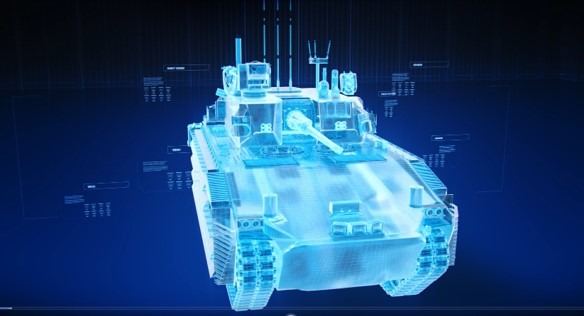El US Army está utilizando herramientas de simulación virtual para completar el diseño del nuevo Vehículo de Combate de Infantería XM30 IFV, que reemplazará al IFV Bradley, con muchas décadas en servicio. En los laboratorios del Detroit Arsenal, los soldados están operando versiones virtuales del vehículo, que otorgan así a los ingenieros de diseño, un adecuado “feedback” que ayuda a optimizar el proceso de ingeniería. Esas simulaciones se desarrollan en escenarios de combate reales, donde los ingenieros presentan acciones de ataque de fuerzas enemigas equipadas con vehículos blindados y drones.
The US Army is using virtual simulations to help shape the design of its future XM30 infantry fighting vehicle — a high-tech replacement for the decades-old Bradley.
Inside a lab at the Detroit Arsenal, soldiers are operating virtual versions of the yet-to-be-built vehicle, offering feedback that engineers hope will streamline development, cut costs, and avoid design missteps before an actual prototype is built.
In one experiment, troops from the army’s Fourth Infantry Division carried out a virtual mission in a fictional Western European setting. Opposing them were civilian role-players simulating enemy forces equipped with drones and armored vehicles.
Using four virtual XM30s, the soldiers engaged targets en route to their objective during a 40-minute scenario.
Informing Design Parameters
The primary goal of these simulations is to gather operational data and user feedback to guide the XM30’s design, all without the delays and expenses of physical prototyping.
Early testing, for instance, uncovered a legroom issue in one vendor’s design. Traditionally, that flaw might only surface after costly hardware was already built. With digital modeling, such problems can be caught and fixed early in the process.
“You can get to 80 or 90 percent of what the vehicle should be via virtual feedback, and then through your physical testing you’re going to refine that last 10 to 20 percent,” Jeff Cambers, branch chief for modeling and simulation at the Ground Vehicle Systems Center, told National Defense Magazine.
The simulations are also giving the army a head start on how to train future XM30 operators, based on how soldiers interact with the systems today.
Two Competitors Remain
The army’s roughly $45-billion Bradley replacement program has narrowed to two finalists: American Rheinmetall Vehicles and General Dynamics Land Systems. Their bids beat out submissions from BAE Systems, Oshkosh Defense, and Point Blank Enterprises.
Both contenders offer designs capable of carrying at least six infantry soldiers, mounting a 50-millimeter cannon, and launching onboard drones for reconnaissance and strike missions.
The army has already made five attempts to replace the Bradley Fighting Vehicle over the past 25 years, and the XM30 is the sixth.
The goal is to make the replacement ready to operate by the 2030s.
Fuente: https://thedefensepost.com


